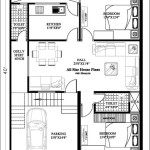Essential Aspects of Draw Plans For Home Addition To House
Enhancing your home's space and functionality is a wise investment that can significantly improve your quality of life. Planning and drawing up plans for a home addition is a critical step in this process, ensuring a successful outcome that meets your specific needs and preferences.
Here are the essential aspects to consider when drawing plans for a home addition to your house:
1. Define Your Requirements:
Start by clearly outlining the purpose and scope of your home addition. Determine the additional space you need, whether for a new bedroom, bathroom, kitchen expansion, or other purposes. Consider your current lifestyle, future plans, and how the addition will integrate seamlessly with your existing home.
2. Choose a Suitable Design:
The design of your home addition should complement the existing architecture while accommodating your functional requirements. Consider various design options, including matching the existing style, blending different styles, or creating a contrasting addition. Consult with an architect or designer to develop a cohesive design that enhances the overall aesthetic of your home.
3. Plan the Layout:
The layout of your home addition is crucial in ensuring efficient use of space and smooth transitions between existing and new areas. Plan the placement of rooms, windows, doors, and other features carefully. Consider factors such as natural light, ventilation, and accessibility to create a comfortable and functional living space.
4. Consider Structural Modifications:
Depending on the extent of your home addition, structural modifications may be necessary to support the new construction. This may involve reinforcing walls, adding beams, or creating new foundations. Engage a qualified structural engineer to assess the required modifications and ensure the safety and stability of your home.
5. Estimate Costs and Seek Permits:
Before starting construction, it is essential to estimate the costs associated with your home addition. This includes materials, labor, permits, and other expenses. Obtain necessary permits from local authorities to ensure compliance with building codes and regulations.
6. Choose Experienced Contractors:
Partner with licensed and experienced contractors who specialize in home additions. Check their references and ensure they have the skills and expertise to execute your project according to your plans and specifications.
7. Monitor Progress and Communicate:
Once construction begins, regularly monitor the progress and maintain open communication with the contractors. Address any concerns or changes promptly to ensure the project stays on track and meets your expectations.
By carefully considering these essential aspects, you can create detailed and comprehensive plans that will guide the successful execution of your home addition project. With proper planning and professional assistance, you can transform your living space into a home that perfectly meets your evolving needs and provides lasting value.

How To Draw A Floor Plan Live Home 3d

How To Draw A Floor Plan Live Home 3d

Home Addition Plan 5179

How To Draw A Floor Plan Live Home 3d

Two Story Addition Transforms Second Floor Of Home To Make It More Livable

Floor Plan Virtual Architect

Free House Design Home And Plans

Home Design 2d And 3d Roomsketcher

Free Simple Two Story House Plans Edit Available

How To Draw A Floor Plan Live Home 3d








